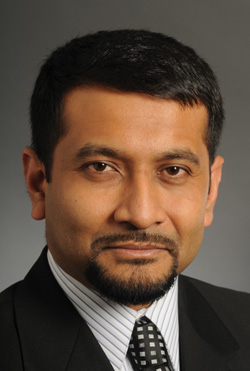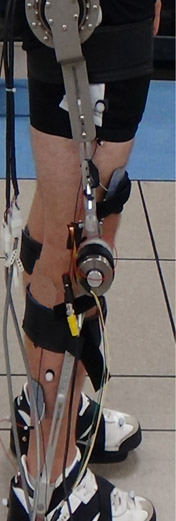
Sikdar. Creative Services Photo
Physical mobility is something many people take for granted, but George Mason University bioengineering professor Siddhartha Sikdar is working on a project that could help people who have lost that freedom regain it.
Sikdar, along with collaborators at George Mason and the University of Pittsburgh, is developing hybrid exoskeletons for people with spinal cord injuries.
"We are developing technology that can help people walk—people with complete and incomplete spinal cord injuries who really don't have assistive technology that is suitable for them right now, to improve their mobility," Sikdar said.
The project started with a conversation with the University of Pittsburgh researchers who are now Sikdar’s collaborators.
"[W]e discussed the application of some wearable imaging technology that we've been developing in my lab and are trying to look for potential applications in areas that involve rehabilitation," Sikdar said.
The researchers received a $400,000 grant from the National Science Foundation for the research.

An example of a powered exoskeleton. Photo provided by Nitin Sharma, professor at the University of Pittsburgh.
Powered exoskeletons are wearable, mobile machines run by electric motors, pneumatics, levers, hydraulics, or a combination of technologies. They enable walking or restoration of other motor controls lost due to illness or accidental injury. However, they can cause muscles to become fatigued.
Sikdar said when the custom-designed sensors of these new hybrid exoskeletons indicate that a muscle is fatigued, the sensors will switch on an electrical motor, so less exertion will be required by the user.
“I think there are very interesting intersections of this technical expertise coming together to create something and approach problems from a very unique perspective,” said Wilsaan Joiner, an assistant professor of bioengineering working with Sikdar on the project.
Aside from their hybrid features, the exoskeletons that Sikdar and his collaborators are designing are also much lighter than existing options.
The researchers hope the final version of their exoskeleton will be able to help users complete everyday tasks, such as walking or standing upright from a seated position.
"I think the exciting part of the project is we are using cutting-edge engineering technologies to improve people's lives, and allow people to regain mobility and function,” Sikdar said. “I think that's really the promise of the field of bioengineering—to use engineering technology to impact health."
